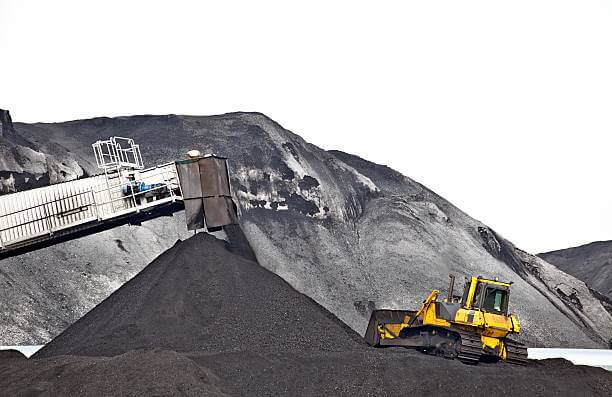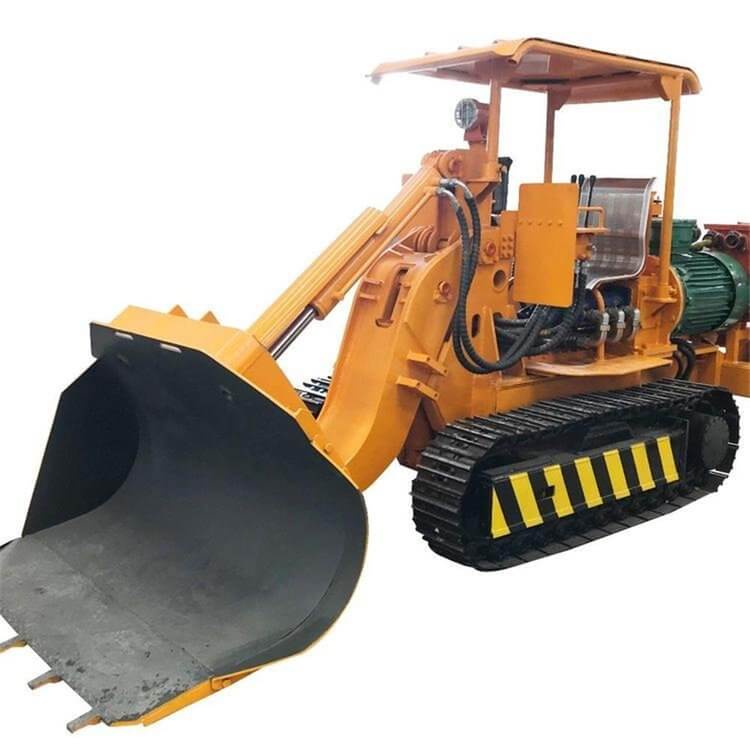Coal mining is a key industry in meeting the world’s energy needs. At the heart of this industry is a powerful and indispensable machine – Coal Mine Side Dump Loader. Among others, operating a coal mine side dumping loader is a complex task requiring meticulous attention to detail and strict safety precautions.
First, the operator must be trained to use the machine correctly, understand its controls and functions, and clearly understand the load capacity and not exceed it to avoid dangerous situations. The efficient operation of this heavy machinery is critical to the smooth running of coal mining operations.
In addition, regular maintenance checks should be performed to check essential components such as hydraulic systems, tires, brakes, engine performance, etc. This will help identify any potential issues that could affect the safe operation of the coal mine side dump loader.

About Coal Mine Side Dump Loader

Coal mine side dump loader, also known as side dump loader or rollover loader. It is widely used in loading loose gravel and ore after blasting in coal mines, metal mines, tunnels and other projects with power supply. It is a high-efficiency loading machine.
Its primary function is to load coal or other materials from mining faces or stockpiles into transport vehicles, such as trucks or rail cars, for transport to processing facilities or distribution points. Especially as coal mining plant machinery. Unlike traditional loaders, which load material onto the front of a truck or conveyor, side dump loaders have a bucket or bucket that tilts sideways, allowing material to be unloaded laterally. Coal mine side dump loaders are typically designed for heavy-duty tasks and equipped with features to withstand the harsh conditions of the mining environment.
Loading and unloading process
The process involves the loader approaching the haul vehicle and placing its side dump bucket next to the vehicle. The bucket is then tilted to dump the coal or other material directly into the truck or conveyor storage area. This approach improves efficiency and reduces the need for multiple repositioning of the loader, making it ideal for specific mining scenarios.
How to operate the Coal Mine Side Dump Loader
In most mining projects, loaders are heavy machinery, causing immeasurable damage. Therefore, the correct use of side dump loaders can effectively help optimize coal mining operations and minimize dangerous problems. Strict adherence to operating practices minimizes spillage or loss of valuable resources during transport. However, the proper use of coal mine side dump loaders is critical to ensuring the safety, operational efficiency and environmental responsibility of coal mining operations. The operation specification of coal mine side unloading loader mainly involves the following steps:
1. Operator Training and Safety Precautions:
Make sure the operator is adequately trained to operate the side dump loader. Proper training covers machine controls, safety protocols, emergency procedures and basic maintenance. Operators should be equipped with appropriate personal protective equipment (PPE) such as hard hats, high-visibility clothing, safety boots, and gloves.
2. Check before operation:
Before starting a loader, inspect the machine thoroughly to check for any damage, leaks or mechanical issues to ensure it is in proper working order. Check tires or tracks for wear and proper inflation. Verify that safety features like lights, alarms, and emergency stop buttons work correctly.
3. Loader positioning:
Position the loader near the coal pile or mining face where it will be loaded. Ensure the loading area is clear of obstructions, debris, people, and restricted areas to prevent accidents.
4. Loading operation:
Place the loader in a safe and stable location for loading, engage the parking brake and ensure the loader is adequately stabilized. The controls are then used to lift and steer the loader’s bucket to the coal pile. Approach the coal pile slowly, make sure the loading angle is stable, and finally bucket to scoop up the coal. (Do not overload the bucket beyond the capacity of the loader)
5. Swivel and side dump:
After the bucket is full, rotate the loader’s body or frame out of the way to align it with the truck or conveyor. Engage the side dump mechanism to release the coal from the bucket. Control pour speed and angle to ensure controlled discharge without spills or hazards.
6. Loading onto truck or conveyor:
Load loader side dumps directly onto the truck bed or conveyor system. Keep a safe distance from trucks or conveyors to avoid collisions or accidents.
7. Repeat the loading process:
Return the loader’s bucket to the coal pile or seam for another load. The loading, rotating and side dumping process is repeated until the truck is full or the required amount of coal is loaded onto the conveyor.
8. Monitor and adjust:
Clear communication between the loader operator and the truck driver or conveyor operator ensures smooth loading operations. Monitor the loading process and adjust to maintain a consistent and controlled loading operation. After loading, perform a post-operation inspection to ensure the loader and surrounding area are soot-free.
9. Maintenance and reporting:
Regularly perform routine maintenance tasks such as cleaning, lubricating and inspecting the loader. Address any identified issues promptly to prevent further damage. Keep accurate records of operations, maintenance activities and any incidents for future reference.
Remember that specific steps may vary depending on the model and capabilities of your side dump loader and the conditions at your mining site. Always refer to the manufacturer’s guidelines and the mine’s operating procedures for the most accurate and safe instructions.
Operation precautions
To ensure the smooth operation of coal mining or transportation, the following items should be paid attention to in advance to avoid unnecessary problems:
- Before operating, the driver should be familiar with the machine’s structure, performance and operating procedures. After the ground operation training and passing the examination, he can go down the well and get on the machine to set a post.
- Drivers should be proficient in driving movements, coordinate their hands and feet, make accurate judgments, and avoid rushing, crashing and misoperation.
- In case of electrical failure, when it is necessary to open the cover of the electric control box, the power supply must be cut off in advance. After opening, the explosion-proof surface must be strictly protected from bumps and scratches.
- After the bucket is lifted, it is strictly forbidden to pass people under the bucket. If it is overhauled under the bucket, it must be protected and supported under the bucket.
- When the machine is walking, it is not allowed to cross hard obstacles larger than 300mm.
- When blasting on the working face, the machine should be driven away from the safe zone 30m away from the working face, and the bucket should be raised to prevent the machine from being damaged.
- When the machine stops working, the power should be cut off and the bucket should land.
- When the driver leaves the machine, the power supply should be cut off to prevent accidents.
- The machine can be used for lifting and pulling mine carts; however, buckets are forbidden to repair walls and roofs or dig ditches when the buckets are landed on the side and unloaded.
Operating coal mine side dump loaders requires strict compliance with operating specifications and precautions to achieve the best safety measures. Operators must receive thorough machine operation training and ensure regular maintenance checks. Additionally, implementing preventive measures during loading can help mitigate potential risks associated with unstable ground conditions or improper positioning of equipment. By carefully following these guidelines, mining companies can improve worker safety and operational efficiency in coal mining operations.